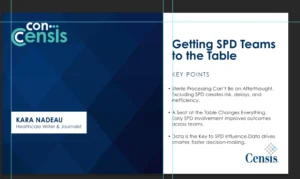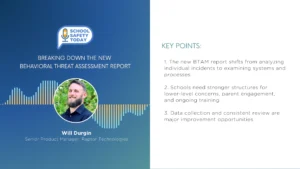Colleges and universities are under a lot of pressure to meet enrollment targets, retain existing students, and see them through to graduation — all while operating under strict budget constraints. Walking this tightrope isn’t easy, but increasingly sophisticated predictive analytics programs can help.
Each year, colleges lose up to a third of the students they accept to “summer melt,” and the global pandemic has only made the problem worse in 2020. However, using data analytics and business intelligence programs to make smarter student enrollment choices helped colleges reduce their summer melt by about 1 percent this fall, a new analysis suggests.
The report, from AI and business analytics firm Othot, also argues that colleges using these technologies performed three times better than the national average in terms of their fall 2020 enrollment figures.
“It was a challenging year across the board,” says Fred Weiss, Othot’s president and CEO. “But there is strong evidence that schools — using data science — can make major progress in growing their enrollment, even in this exceptionally difficult climate.”
One success story is the Florida Institute of Technology, which increased its enrollment this fall by 3 percent over 2019 results. Another is Texas Tech University, which set an ambitious goal of growing enrollment to 40,000 students by 2020. Not only did the university exceed this goal by 322 students despite the pandemic, but it reportedly grew enrollment by 9 percent over three years and increased student retention by 2.6 percent using both predictive and “prescriptive” analytics.
Texas Tech’s enrollment management team knew that if they wanted to grow enrollment, they would need a deep understanding of how students responded to their recruiting and marketing efforts.
Whereas predictive analytics shows what will happen in the future, prescriptive analytics recommends which actions to take to improve outcomes. Othot’s analytics solution uses both to determine how students respond to different marketing and recruitment campaigns throughout the enrollment cycle and make suggestions accordingly.
Texas Tech has used the platform to identify which students are most likely to enroll and persist, as well as where to focus its marketing efforts to achieve the most impact. For instance, in 2020 the university’s marketing budget remained flat and there were more prospective students in the funnel. With those budget constraints, Julián Olivas, director of marketing and communications, used Othot to determine which students in a pool of 300,000 should receive a mailer.
“Data analytics has allowed us to be more strategic in our approach to enrollment. What analytics allows us to do is see how our efforts correlate to student behaviors,” says Jamie Hansard, vice president of enrollment management.
“Students and their families have wanted more communication through the pandemic. We have noticed that our increased use of the model and our segmentation of campaigns has allowed us to meet our 2020 goals. We were able to minimize summer melt and enroll the largest freshmen class in our history.”
Better conversion rates
Taylor University, a non-denominational Christian liberal arts college in Upland, Ind., is using a business intelligence and data analytics platform from ibi to meet its annual enrollment goals.
Facing greater competition for prospective students, the university was looking to increase its conversion rate at each stage of the enrollment process, resulting in more students who are a good fit for the institution and therefore are more likely to graduate.
“Like most of higher education, we are not only aware of but responding to the impeding demographic cliff of fewer high school graduates in the coming years,” says Nathan Baker, vice president of enrollment management. “We operate in a highly saturated market. At the moment, we’re seeking to maximize net tuition revenue without necessarily growing our headcount. Retention plays an important part in this process, and Taylor has historically held enviable retention rates near 90 percent.”
In the admissions department, a team of five full-time recruiters processes an inquiry pool of 50,000 prospective students to fill about 500 enrollment spots. Ibi predictive analytics helps them determine the best prospective students — and in the future, it will also indicate which ones are most likely to enroll.
Working in collaboration with Taylor’s Enterprise Data Systems team, the admissions department has built predictive models using ibi tools to gain better insight into the progression of prospects through its admissions funnel. The university looks at about 60 data points altogether to determine which variables have the highest predictive strength for each stage in the cycle.
“Most of our data points are common to other universities,” says Mark Lora, director of Enterprise Data Systems, “though some are indigenous to the culture of Taylor. They include a wide variety, like high school type, GPA, test scores, distance from campus, measures of student engagement, financial metrics, and academic interests.”
In its first year of using predictive analytics, Taylor University ended up recruiting the largest freshman class in its history. The following year, the university recruited the fourth-largest class in its history.
“It’s important to note that our recent enrollment success is not attributable solely to predictive scoring,” Lora says. “Instead, it was the strategic use of these insights — in combination with a proactive recruitment approach — that has proven to be extremely valuable. A great admission staff is necessary to recruit cohorts of new students. However, (predictive analytics) was instrumental in directing their work.”
More informed nudging
Community colleges face a different set of challenges in enrolling and retaining students. Many community college students have full-time jobs and/or must juggle family obligations while attending school. Community colleges are using predictive analytics to guide their use of intervention strategies more strategically to help students complete their degree.
“Our students are stressed,” says Brian Merritt, chief academic officer and vice president for learning and workforce development at Central Carolina Community College. “Many have lost incomes, and most are exhausted. But, they’re also resilient, and the more nimble we can be to make needed adjustments to our policies and practices, the more likely we can keep their momentum going through this pandemic.”
Nationally, Merritt says, community colleges have seen the largest drop in headcount in almost a decade — and “we have to step up and respond.”
Central Carolina is using Aviso Retention to help. Aviso pulls data from the college’s student information system, learning management system, enterprise resource planning system, and other sources to make informed predictions about course completion and student persistence. It also captures data from each student interaction with college staff to quantify their engagement. Using this information, it suggests when and how campus staff should intervene in order to reengage students.
Aviso can also help with enrollment, using geo-demographic information and other factors to give enrollment and marketing staff better insight into where to focus their efforts for the best yield.
“The reporting features and predictive data are especially helpful in allowing us to be timely with our interventions,” Merritt says. “And a text feature has given us the capability to seamlessly communicate and offer nudging in a data-informed way.”
Since 2012, the college has increased retention by an average of 9 percent for full-time students and 18 percent for part-time students. What’s more, the college’s graduation rate has increased by 19 percent.
“Those percentage points represent thousands of students finding success in their educational pathway and beyond,” Merritt concludes.
Twitter – @MarketScale
Facebook – facebook.com/marketscale
LinkedIn – linkedin.com/company/marketscale








